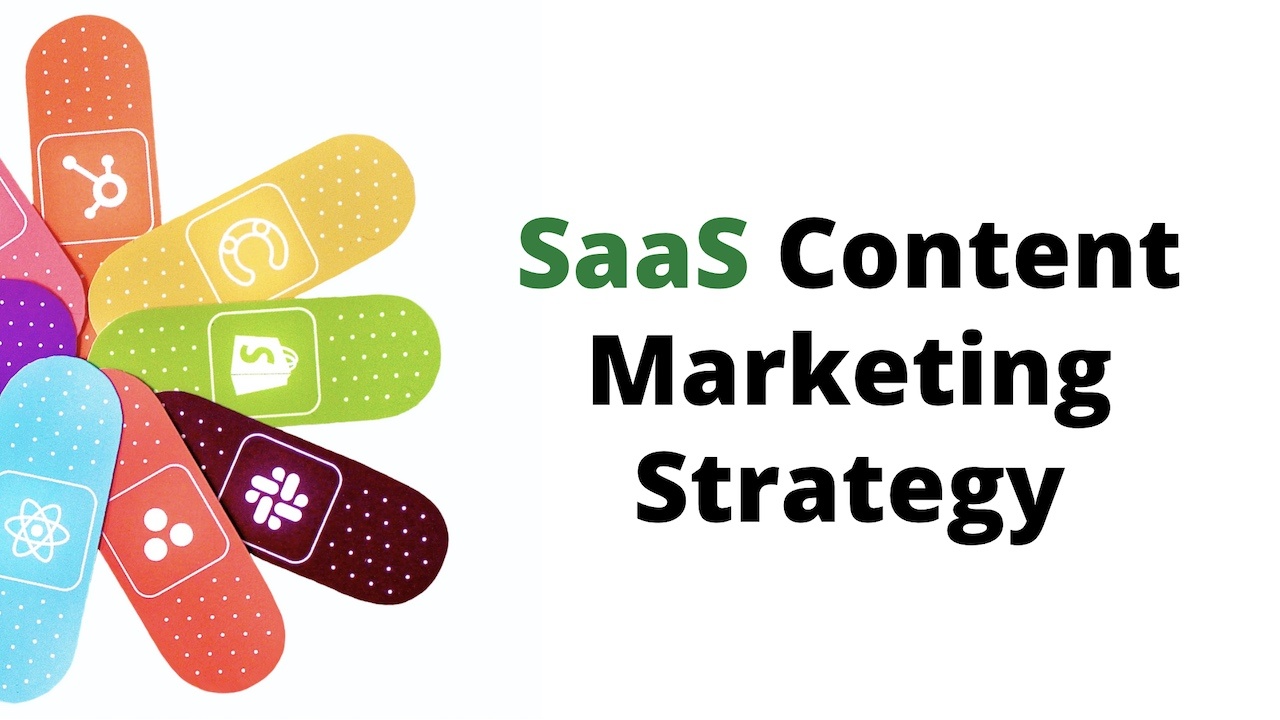Hello!
The SaaS industry is flourishing, with more than 30,000 companies operating globally, leading to a competitive environment that prompts them to leverage various digital marketing strategies for brand awareness and sales.
However, the abundance of information on the internet has made it crucial to create compelling content that encourages user action.
If you are running a SaaS business, it can be a daunting task to make your target audience understand the value of your product or service and convince them to take action during a website visit.
 Well written SaaS content is vital in this context, which involves clearly but concisely explaining the benefits of using your product/service, highlighting why it is better than what your competitors have to offer, how it will address customer pain points, and establishing trust via client testimonials and reviews. By addressing these aspects, customers are more likely to sign up for the product or service.
Well written SaaS content is vital in this context, which involves clearly but concisely explaining the benefits of using your product/service, highlighting why it is better than what your competitors have to offer, how it will address customer pain points, and establishing trust via client testimonials and reviews. By addressing these aspects, customers are more likely to sign up for the product or service.
This is where SaaS content marketing comes into play.
Why SaaS Content Marketing Is Important to Generate Leads
Although paid advertising can yield results, it can also come at a significant cost. On the other hand, organic search presents a more cost-efficient and influential approach to generating meaningful clicks and leads. And SaaS content marketing can do just that for your business.
SaaS content marketing has the potential to convert prospects into paying customers, plain and simple. And brands need to recognize its power.
SaaS content marketing involves crafting informative and engaging content that effectively communicates the value of your SaaS product and helps move prospects down the marketing funnel.
Utilizing SaaS content marketing can effectively showcase your product and attract your Ideal Customer Profile (ICP), ultimately leading to the conversion of prospects from mere readers to trial users and paying customers. This powerful approach can also establish your brand as an authority within your niche.
Why SaaS Content Marketing Is Unique?
There are several differences between SaaS content marketing and other forms of content marketing.
 Here are some of them:
Here are some of them:
- SaaS content marketing is very detail oriented and provides a comprehensive understanding of how the service/product works. On the other hand, content marketing for other industries can be generic and tend to focus on general topics related to the industry
- SaaS content marketing is more focused on the features and benefits of the product /service rather than promoting the SaaS brand itself.
- SaaS content marketing effectively addresses the pain points of targeted users within the SaaS niche.
The goal of SaaS content should be to convert the reader to a paying customer (user signup).
 Here are some questions SaaS content writers need to have in mind when creating SaaS content:
Here are some questions SaaS content writers need to have in mind when creating SaaS content:
- Why should prospects buy your SaaS product/service?
- What makes it different from what your competitors have to offer?
- What are the other use cases of your SaaS product that your audiences are not aware of?
- What offer/incentitve can you give your prospects? (Free trial, Free Demo?)
Benefits of SaaS Content Marketing and SEO
One of the primary benefits of organic traffic is that it doesn’t require payment for clicks. When your content ranks for a specific keyword, it can consistently generate free traffic for as long as it continues to rank. If you implement a sales-focused SaaS content marketing strategy, this content will also drive leads or sales over an extended period
Here are some of the main benefits:
#1. Add Value to Your Product through SaaS Content Marketing
SaaS content marketing involves providing in-depth information to your customers about your product or service, demonstrating how it can benefit them.
 By addressing your customers’ queries and concerns in your content, you can position yourself as an expert in your industry and build trust with your audience through transparent communication about your brand.
By addressing your customers’ queries and concerns in your content, you can position yourself as an expert in your industry and build trust with your audience through transparent communication about your brand.
Professional content writing plays a critical role in informing potential customers about the value of your product or service.
Many customers are inclined to research and learn about a product before committing to a subscription or purchase.
For example, consider a SaaS company that offers project management software. Through content marketing, they can create blog posts, videos, white papers and other resources that explain how their software can streamline workflows, improve communication, and increase efficiency for teams of all sizes.
By providing real-world use cases and success stories, they can demonstrate the tangible value of their product to potential customers.
So, by creating high-quality content that resonates with your target audience, you can build brand awareness, establish credibility, and drive sales and revenue for your business.
For SaaS business owners who may be hesitant to divulge too many details about their product or service, content marketing is an effective tool for showcasing the benefits of your offering without giving away proprietary information or trade secrets.
#2. Improve Your Visibility through SaaS Content Marketing
 To produce effective content that resonates with your audience, it’s essential to understand what they’re actively searching for. By conducting thorough keyword research and analyzing keyword intent, you can gain insights into your audience’s interests and create content that addresses their specific needs.
To produce effective content that resonates with your audience, it’s essential to understand what they’re actively searching for. By conducting thorough keyword research and analyzing keyword intent, you can gain insights into your audience’s interests and create content that addresses their specific needs.
Keyword research is not only crucial for improving your visibility but can also help your business or organization tap into new markets.
By identifying the right keywords to target, you can expand your reach and attract new customers to your website.
Once you’ve identified the most relevant keywords for SaaS content marketing, it’s important to strategically incorporate them throughout the content. Placing keywords in relevant places can significantly improve your organic search ranking and increase the visibility of your content.
Be sure to use the chosen keywords naturally and organically throughout the content, providing value and relevance to your readers.
#3. Bring a Human Voice to Your Brand Through SaaS Content Marketing
SaaS content marketing can infuse a human touch to your brand, making it more relatable and accessible to your audience.
 By developing a distinct brand voice and personality, you can attract and engage potential customers, while showcasing what sets your brand apart and how your product or service can improve their lives.
By developing a distinct brand voice and personality, you can attract and engage potential customers, while showcasing what sets your brand apart and how your product or service can improve their lives.
By creating high-quality content that provides real value to your customers, you can establish trust and credibility with your audience. Rather than just focusing on sales, quality content shows that you genuinely care about helping your customers, leading to increased subscription leads and customer loyalty.
In a world where many aspects of SaaS businesses can be highly technical and complex, content writing offers an opportunity to build a brand persona that resonates with your audience.
By creating content that is both informative and engaging, you can establish a connection with your customers that goes beyond just selling a product or service. Ultimately, this can drive sales and help your business stand out in a crowded marketplace.
#4. Establish Authority With Your Niche Market Through SaaS Content Marketing
 High-quality SaaS content marketing has the power to establish your authority and credibility within your niche market.
High-quality SaaS content marketing has the power to establish your authority and credibility within your niche market.
By producing informative and helpful educational content, you can position yourself as a thought leader and gain the trust and respect of your audience.
Well-crafted content not only educates but also entertains your audience, creating a positive brand impression and fostering a deeper connection with your customers. When you speak about topics that are relevant to your industry or discuss future trends, it captures the attention of your audience and positions you as a knowledgeable and credible resource.
Staying up-to-date with industry news and relaying that information to your customers can also contribute to building credible content. By demonstrating a deep understanding of your product or service and providing valuable insights to your audience, you can establish your authority and reputation as a reliable source of information.
In short, creating high-quality, informative SaaS content that is relevant to your niche market is a powerful way to build credibility and establish yourself as a trusted thought leader in your industry.
10 Tips to Start with SaaS Content Marketing
 SaaS content writing is an effective strategy for SaaS businesses. However, if it is not implemented in the right way, you may not get the desired results for your business. A well-framed content creation process can work like a charm and help you achieve your desired goal.
SaaS content writing is an effective strategy for SaaS businesses. However, if it is not implemented in the right way, you may not get the desired results for your business. A well-framed content creation process can work like a charm and help you achieve your desired goal.
Here are seven things you must do before you start writing content for your SaaS business.
#1. Have Clear Goals
To succeed in SaaS content marketing, having clear goals is essential.
Just as you need to know your destination before starting a journey, you need to have a defined business goal before creating content.
While there may be various business goals for your SaaS product, choosing the right one will enable you to develop content that resonates with your target audience.
Defining a business goal is crucial as it keeps you focused on what you want to achieve, allowing you to measure your success more easily. This, in turn, enables you to adjust your SaaS content marketing strategy over time based on what works and what doesn’t.
A clear business goal also helps you determine the type of content to focus on to achieve your objectives, making it easier to measure your results and improve them over time.
#2. Understand and Define Your Ideal Customer Profile (ICP)
To effectively drive sales for your SaaS brand, a successful content marketing strategy is crucial. However, this can only be achieved by understanding and defining your ideal customer profile, also known as a buyer persona.
To guide users towards signing up and converting them into paying customers, it’s essential to produce content that addresses and solves their pain points.
And to do that, you must know who your content is targeting.
 To define your ideal customer profile, there are several things you need to consider, including:
To define your ideal customer profile, there are several things you need to consider, including:
- Who is your target audience? (Business owners, SaaS Marketers etc.)
- What are their needs?
- What challenges are they facing?
- What are they looking to achieve?
By creating a buyer persona, you can map out important details about your customers, such as their gender, age, education level, location, interests, personality traits, behavior, and more.
This information will help you identify topics that are relevant to your target audience and guide your content creation process.
An ideal customer profile is like a blueprint that helps you determine what makes someone a perfect fit for your product or service.
By focusing on the questions mentioned above before creating SaaS content, you can write engaging and valuable content that resonates with the audience you want to reach.
#3. Conduct In-Depth Keyword Research
 To ensure the success of your SaaS content marketing efforts, it’s essential to conduct thorough keyword research before creating any content. This is especially important if you’re relying on organic traffic growth. Keyword research helps you understand what people are searching for on Google and which keywords to target in your content.
To ensure the success of your SaaS content marketing efforts, it’s essential to conduct thorough keyword research before creating any content. This is especially important if you’re relying on organic traffic growth. Keyword research helps you understand what people are searching for on Google and which keywords to target in your content.
One simple way to conduct keyword research is to ask your current customers questions about the challenges and problems they face.
This can provide valuable insight into the topics and keywords to focus on in your content.
You can also use free and paid tools like Ahrefs to conduct more in-depth keyword research. This can help you quickly generate content ideas based on what people are searching for in your niche.
However, it’s important to avoid keyword stuffing, which is the practice of overloading your webpage with keywords in an attempt to manipulate search engine rankings.
This tactic may result in short-term gains, but it’s not sustainable and can even result in Google penalizing your website. Instead, focus on creating relevant content that aligns with the user’s search intent.
#4. Set Up Editorial Guidelines
Editorial guidelines serve as a set of rules that govern an organization’s brand style, structure, and content strategy.
 These guidelines act as a manual for your SaaS content marketing team, instructing them on the best practices to achieve your desired goals.
These guidelines act as a manual for your SaaS content marketing team, instructing them on the best practices to achieve your desired goals.
By maintaining consistency in voice, tone, grammar, format, and other aspects, editorial guidelines ensure that your organization produces high-quality, ethical content that aligns with your brand identity and marketing strategies.
Establishing clear editorial guidelines can save time for everyone involved in the content creation process and help produce consistent, quality content on a timely basis.
Ultimately, editorial guidelines serve as the foundation of all great content.
#5. Measure the Results
Regularly measuring your results is essential for determining the effectiveness of your SaaS content marketing strategy.
By tracking and analyzing metrics such as lead generation, revenue, and ROI, you can determine whether your efforts are paying off and make informed decisions about how to improve. In addition, engagement metrics like page views, social shares, comments, and email subscribers provide valuable feedback on how your content is resonating with your audience.
 It’s also important to consider customer satisfaction levels as a metric for evaluating the success of your content. By understanding how your content has helped or hindered your customers, you can identify areas for improvement and ensure that your content meets their needs.
It’s also important to consider customer satisfaction levels as a metric for evaluating the success of your content. By understanding how your content has helped or hindered your customers, you can identify areas for improvement and ensure that your content meets their needs.
Tools like Search Console and Google Analytics can provide detailed insights into user behavior, allowing you to optimize your content strategy accordingly.
Ultimately, measuring your results is key to refining your approach and achieving your content marketing goals.
#6. Conduct Interviews With Your SaaS Clients
Conducting frequent interviews with your clients is crucial to producing individual articles that rank highly in desired search engine results pages (SERPs).
By interviewing clients, you can identify the most relevant and compelling features of the product for the specified topic, as well as any unique points that can be included in the content.
You can tap into the expertise of people at your clients’ companies to identify the challenges or problems their target customers are facing regarding the topic you’re covering.
This helps you understand how your client’s product solves their customers’ pain points, and how it differs or outperforms their competitors.
#7. Update Your Old SaaS Content
Regularly publishing new SaaS content is a beneficial practice, but it may not always be the ultimate solution to address your content marketing challenges.
 By evaluating the content already available on your website, you can gain a better understanding of your audience’s content preferences, enabling you to focus on new goals that can propel your business forward.
By evaluating the content already available on your website, you can gain a better understanding of your audience’s content preferences, enabling you to focus on new goals that can propel your business forward.
Refreshing your existing content can broaden your reach to new audience segments, increase organic traffic, and introduce your content to an entirely new audience.
It’s important to remember that you don’t always need to create something entirely new every time your content becomes outdated.
Sometimes, repackaging old content in a new format or giving it a fresh perspective can be just as effective.
#8. Edit and Proofread SaaS Content
Crafting flawless content on the first attempt is a daunting task.
To create a high-quality SaaS content marketing post that resonates with your audience, you must edit and proofread your work. The quality of your content is paramount, as it will determine how your audience perceives your work.
 Whether you’re writing an article or creating a video, it’s essential to ensure that your message is conveyed clearly and concisely. E
Whether you’re writing an article or creating a video, it’s essential to ensure that your message is conveyed clearly and concisely. E
diting and proofreading will help you achieve this, ensuring that your content is accurate, engaging, and easy to understand.
Multiple rounds of editing and proofreading are necessary to catch errors and avoid plagiarism.
#9. Have a Content Mapping and Distribution Plan
Content mapping is a crucial element of content marketing that involves providing the appropriate type of content to the intended audience or persona.
After creating an article or blog post, consider distributing it through the company newsletter or blog. For videos, uploading them to the company’s YouTube channel or social media profile is a viable option. If you’re focusing on visual content such as videos and images, Instagram is an ideal platform to consider.
#10. Boost Internal and External Linking Through SaaS Content Marketing
Link building is a crucial marketing tactic employed by advertisers worldwide, and it is directly linked to content marketing.
Internal linking refers to the linking you use within a website’s structure to connect your pages, while external linking involves using links from outside sources to enhance the value of your content.
 When high domain authority websites with relevant content link to your website, it signals to Google and other search engines that your website is a trustworthy authority on a particular topic. Search engines use backlinks to your website to gauge the value of your content and determine its relevance to users.
When high domain authority websites with relevant content link to your website, it signals to Google and other search engines that your website is a trustworthy authority on a particular topic. Search engines use backlinks to your website to gauge the value of your content and determine its relevance to users.
Link building can help you generate ongoing and consistent referral traffic without having to modify the link’s permanent location on an authoritative domain.
Backlinks from other web pages also enable search engine bots to discover new websites. Without any backlinks, search engine bots may not be able to successfully crawl your website, making it difficult for your content to be discovered by potential readers.
In summary, link building plays a crucial role in SaaS content marketing, as it can help establish your website’s authority, generate referral traffic, and improve your visibility on search engines.
How to Increase Conversion With SaaS Content Marketing
Here are some tips that will help you increase conversion with SaaS content marketing.
Write for Your Audience
It’s common for SaaS content marketing writers to question whether they should create content for their target audience or optimize their content for search engines.
Unfortunately, many writers prioritize search engines over their actual readers. However, it’s important to remember that high-quality content is engaging and informative.
 Search engines, such as Google, don’t require content that’s written specifically for them. Instead, search engines seek content that’s well-written, easy to understand, and provides helpful answers to the target audience’s questions.
Search engines, such as Google, don’t require content that’s written specifically for them. Instead, search engines seek content that’s well-written, easy to understand, and provides helpful answers to the target audience’s questions.
Ultimately, your content should be discoverable and easily accessible to your readers.
Creating content that solves your target audience’s problems is just as important as optimizing your content for search engines.
While incorporating keywords and other SEO tactics can generate traffic, it won’t be helpful in the long run if the readers don’t engage with your content or convert into customers. Always prioritize writing for your audience first, and everything else will follow.
If you rush to publish content without a clear purpose, you won’t hit the mark. To write top-quality content, consider defining your topic of focus, target audience, and conducting thorough research.
Additionally, make sure your content is informative, educational, and engaging. Cite your sources and edit and proofread your work to ensure that your content is well-crafted and compelling.
Share All Relevant Information
Trust is the foundation of customer relationships. To build trust, transparency and honesty are key. Your SaaS product or service can only attract signups if your brand is perceived as trustworthy.
 Providing all relevant information about your product or service is important in helping customers understand what to expect. Failing to share important details can result in a negative user experience and lower conversion rates.
Providing all relevant information about your product or service is important in helping customers understand what to expect. Failing to share important details can result in a negative user experience and lower conversion rates.
To inspire trust, loyalty, and curiosity in your target market, you need to create quality SaaS content that is transparent and honest.
This approach will help you establish credibility and authority in your online marketing efforts.
In today’s digital age, consumers can quickly detect insincere messaging. If your brand story is too exaggerated, self-promotional, or cannot substantiate its claims, people will lose trust and seek out other brands that better embody their values and identity.
To avoid this, it’s best to create content that is honest and evokes an emotional response from readers.
You can use a tone that represents your position on the topic and tell stories that elicit specific emotions from readers, such as happiness, joy, or curiosity. Such emotions are more likely to be consumed and shared by your audience.
Focus on Consistency and Originality
To maintain your audience’s interest, it’s crucial to update your SaaS content regularly.
 With so many options available, it’s easy to lose your customers’ attention if you don’t keep them engaged.
With so many options available, it’s easy to lose your customers’ attention if you don’t keep them engaged.
Your competitors will seize the opportunity if you fail to publish new content or update existing content consistently.
However, it’s not just about consistency; originality is just as important. Repeating the same facts and figures can make your brand’s voice and identity stale and uninteresting to your audience.
To make your content inspiring and engaging, you must strike a chord with your target audience. Look to successful brands for inspiration and discover how they develop unique topics.
By analyzing their SaaS content marketing strategy, you can brainstorm innovative ways to inject enthusiasm and creativity into your own content.
Source Your Stats to Show Credibility
To ensure credibility in your SaaS content, it’s crucial to provide evidence and cite reputable sources that support your claims when writing about your products or services. This helps readers understand the basis of your assertions and how you came to your conclusions.
Visual aids such as charts and graphs are also powerful tools for communicating complex information to your audience.
However, it’s important to ensure that the statistics you use are sourced from credible sources to avoid creating a negative impression of your brand.
 When sourcing statistics, quotes, and citations, avoid linking to untrustworthy sites or using inaccurate details that could harm your brand’s credibility.
When sourcing statistics, quotes, and citations, avoid linking to untrustworthy sites or using inaccurate details that could harm your brand’s credibility.
Respecting your audience’s intelligence is essential in content creation. Avoid oversimplifying your message with inaccurate details to make a sale. Your writing should accurately portray your brand’s capabilities and values, assuring your audience that you stand behind your promises.
Above all, your content should provide value to those seeking information. Sharing your expertise and knowledge builds trust and respect with your audience and strengthens the relationship based on honesty and credibility.
Create a FAQs (Frequently Asked Questions) Section
To provide valuable information to your customers, your SaaS content marketing piece should aim to answer their questions. One effective way to achieve this is by creating a Frequently Asked Questions (FAQs) section that covers a wide range of possible inquiries.
 To ensure its relevance over time, consider setting up the FAQs section in a way that allows you to continuously add new questions and answers.
To ensure its relevance over time, consider setting up the FAQs section in a way that allows you to continuously add new questions and answers.
However, it’s important to prioritize providing helpful information to your customers over solely focusing on SEO. While keeping SEO in mind can be helpful, solely tailoring your FAQs section for search engines may not benefit your customers.
By focusing on addressing customer concerns and questions, your FAQs section can still improve your search engine rankings while also building trust and credibility with your customers.
Also read:
- What is Business Writing and How to Improve Your Skills?
- AI Is Set To Bring Huge Changes To The World Of Real Estate
- Dumpor Instagram Story Viewers
Final Thoughts
Effective SaaS content marketing can be a game-changer for software companies seeking to attract, educate, and convert customers. When executed correctly, a well-crafted content strategy can serve as the foundation for your entire marketing approach.
To ensure maximum impact, your content must be tailored to your target audience, integrating relevant keywords with clarity and simplicity. It should be concise and persuasive, compelling readers to take action through a clear and compelling call-to-action (CTA).
Thank you!
Join us on social media!
See you!






